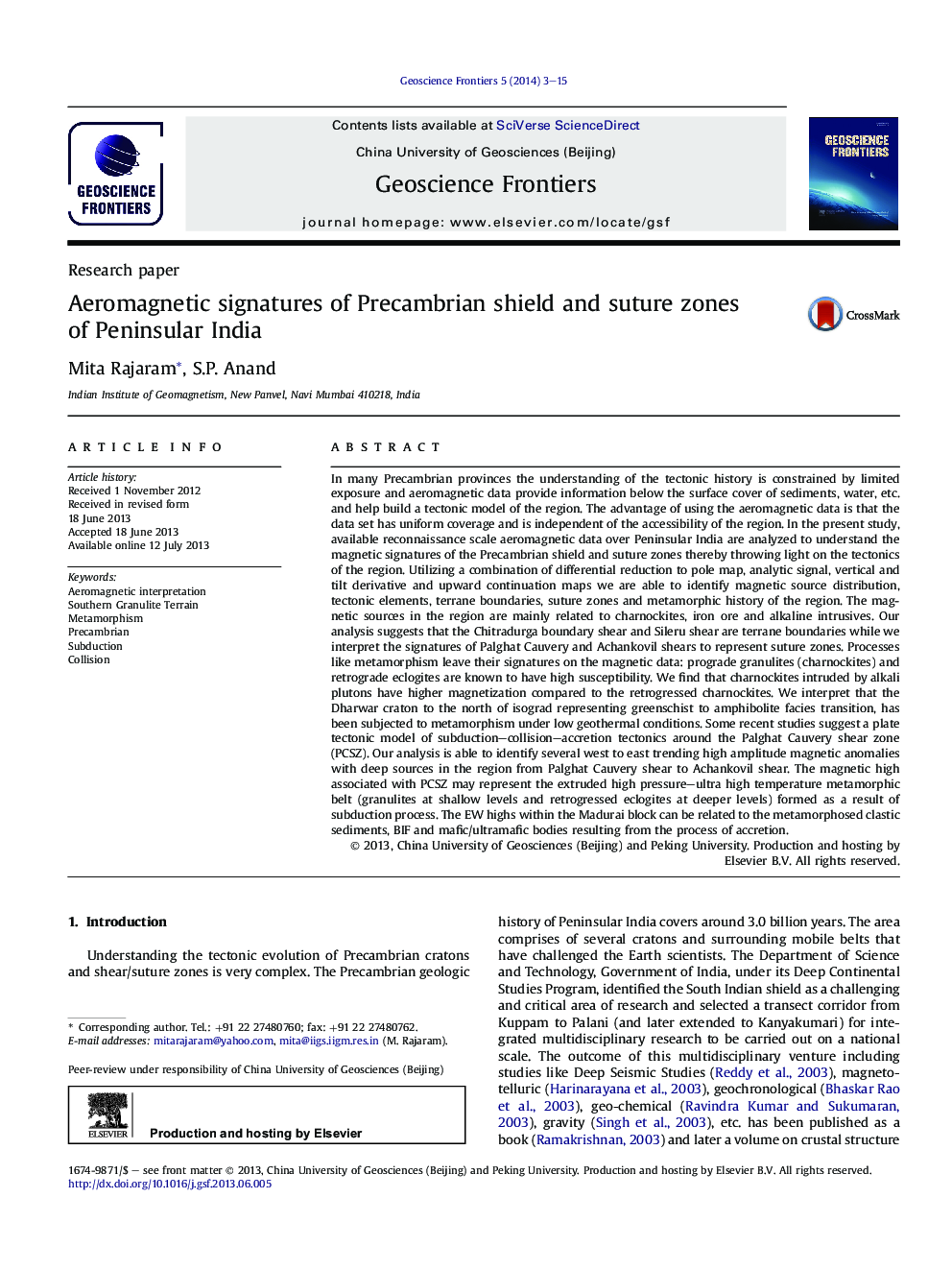| Article ID | Journal | Published Year | Pages | File Type |
|---|---|---|---|---|
| 4681754 | Geoscience Frontiers | 2014 | 13 Pages |
•Aeromagnetic data identify tectonic blocks, terrain boundaries, suture zones, shears, faults.•PCSZ magnetic high may represent extruded HP–UHT metamorphic belt formed as a result of subduction.•E–W highs in Madurai block may be due to BIF and mafic/ultramafic bodies resulting from accretion.
In many Precambrian provinces the understanding of the tectonic history is constrained by limited exposure and aeromagnetic data provide information below the surface cover of sediments, water, etc. and help build a tectonic model of the region. The advantage of using the aeromagnetic data is that the data set has uniform coverage and is independent of the accessibility of the region. In the present study, available reconnaissance scale aeromagnetic data over Peninsular India are analyzed to understand the magnetic signatures of the Precambrian shield and suture zones thereby throwing light on the tectonics of the region. Utilizing a combination of differential reduction to pole map, analytic signal, vertical and tilt derivative and upward continuation maps we are able to identify magnetic source distribution, tectonic elements, terrane boundaries, suture zones and metamorphic history of the region. The magnetic sources in the region are mainly related to charnockites, iron ore and alkaline intrusives. Our analysis suggests that the Chitradurga boundary shear and Sileru shear are terrane boundaries while we interpret the signatures of Palghat Cauvery and Achankovil shears to represent suture zones. Processes like metamorphism leave their signatures on the magnetic data: prograde granulites (charnockites) and retrograde eclogites are known to have high susceptibility. We find that charnockites intruded by alkali plutons have higher magnetization compared to the retrogressed charnockites. We interpret that the Dharwar craton to the north of isograd representing greenschist to amphibolite facies transition, has been subjected to metamorphism under low geothermal conditions. Some recent studies suggest a plate tectonic model of subduction–collision–accretion tectonics around the Palghat Cauvery shear zone (PCSZ). Our analysis is able to identify several west to east trending high amplitude magnetic anomalies with deep sources in the region from Palghat Cauvery shear to Achankovil shear. The magnetic high associated with PCSZ may represent the extruded high pressure–ultra high temperature metamorphic belt (granulites at shallow levels and retrogressed eclogites at deeper levels) formed as a result of subduction process. The EW highs within the Madurai block can be related to the metamorphosed clastic sediments, BIF and mafic/ultramafic bodies resulting from the process of accretion.
Graphical abstractFigure optionsDownload full-size imageDownload as PowerPoint slide
